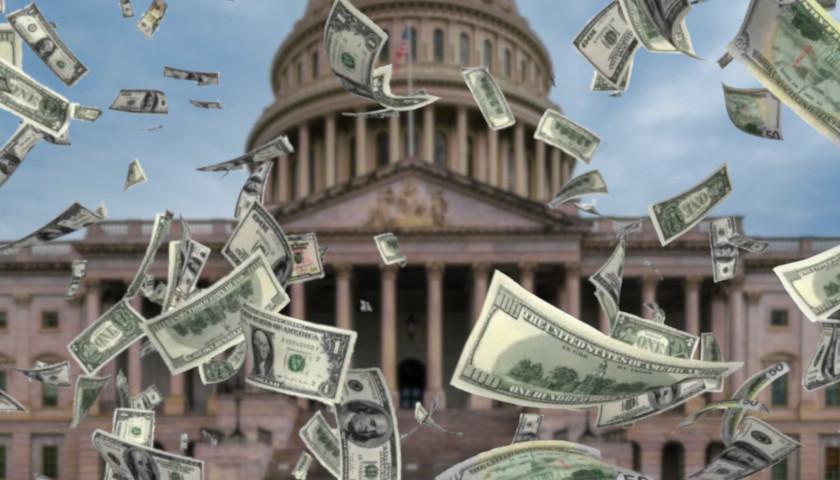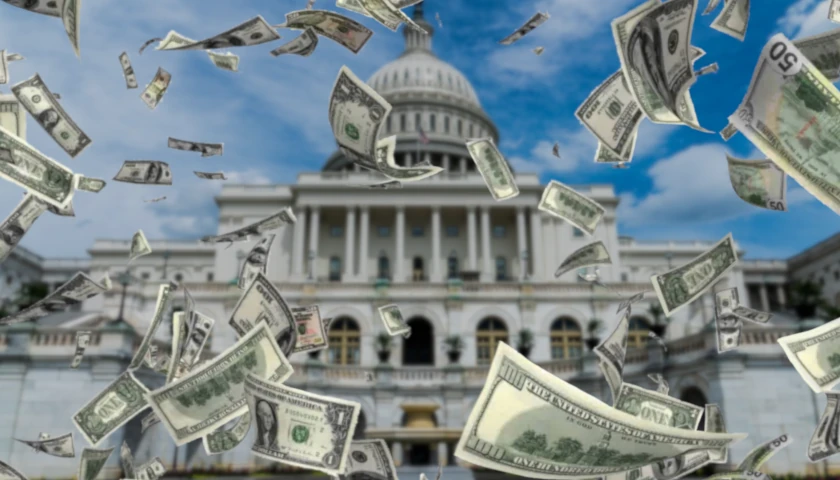by Nicholas Ballasy
There were $236 billion worth of “improper payments” made under the Biden administration in fiscal year 2023 alone, more than double the amount in fiscal year 2013, Just the News has learned.
According to the Government Accountability Office, the potential for waste, fraud, and abuse from erroneous payments runs across the spectrum of federal agencies.
Since 2003, there have been more than $2.4 trillion of improper payments made government-wide, according to the GAO, and that figure does not include the fiscal year 2023 amount reported by the Office of Management and Budget.
The GAO defines improper payments as payments that should not have been made or were made in the incorrect amount. The government watchdog has concluded that improper payments have “consistently been a government-wide issue despite efforts to identify their root causes and reduce them. In fact, the government still doesn’t fully understand the size of federal improper payments, partly because it doesn’t have complete, reliable, or accurate estimates.”
In fiscal year 2022, the amount of improper payments was $247 billion.
The United States government programs that typically account for the most improper payments include Medicare, Medicaid, the Earned Income Tax Credit, and Social Security.
The White House published a blog post on November 22, 2023 explaining that the federal government’s overall rate of improper payments had gone down in fiscal year 2023, which ended September 30, 2023. The post did not include the government-wide total as a dollar amount. Just the News reached out to OMB and asked for the government-wide total of improper payments made from fiscal 2023 in dollars.
“The total amount, as reported by the agencies, FY2023: $236 billion,” an OMB spokesperson said. “We will have a report analyzing this estimate issued in the next month or two.”
For the time being, the public can view individual datasets showing the amount of improper payments made across a large group of federal programs issuing payments to recipients.
Rep. Bob Good, R-Va., chairman of the conservative House Freedom Caucus, described the improper payments as “more evidence” demonstrating that Washington, D.C. is “broken.”
“This is just more evidence that Washington is broken and too many career politicians and bureaucrats don’t care about how they waste taxpayer dollars,” he said. “We are $34 trillion in debt and will be over $36 trillion in debt before the current debt limit deal ends next January. We cannot afford to wait any longer to stop the runaway spending train and get our fiscal house in order.”
Congress faces two appropriations deadlines at the end of this month and in early February. Both the House and Senate must pass another spending bill to keep the federal government funded and those negotiations are underway among congressional leaders. The national debt recently surpassed $34 trillion for the first time in U.S. history.
More than 13 years ago, former President Barack Obama signed the “Improper Payments Elimination and Recovery Act” with the goal of reducing improper payments by $50 billion through 2012. At the time, improper payments were $110 billion in fiscal 2009 compared to $236 billion in fiscal 2023.
According to a Congressional Research Service report published in 2018, there was a “significant increase in improper payments from FY2007 ($42 billion) to FY2010 ($121 billion), followed by a slight decrease through FY2013 ($106 billion), another increase through FY2016 ($144 billion), and a slight decrease in FY2017 ($141 billion).” The CRS also reported that a “small subset of programs has accounted for 85% to 98% of the government’s total improper payments each year.”
– – –
Nicholas Ballasy has been breaking news for more than a decade in the nation’s capital and questioning political leaders about the most pressing issues facing the nation.





